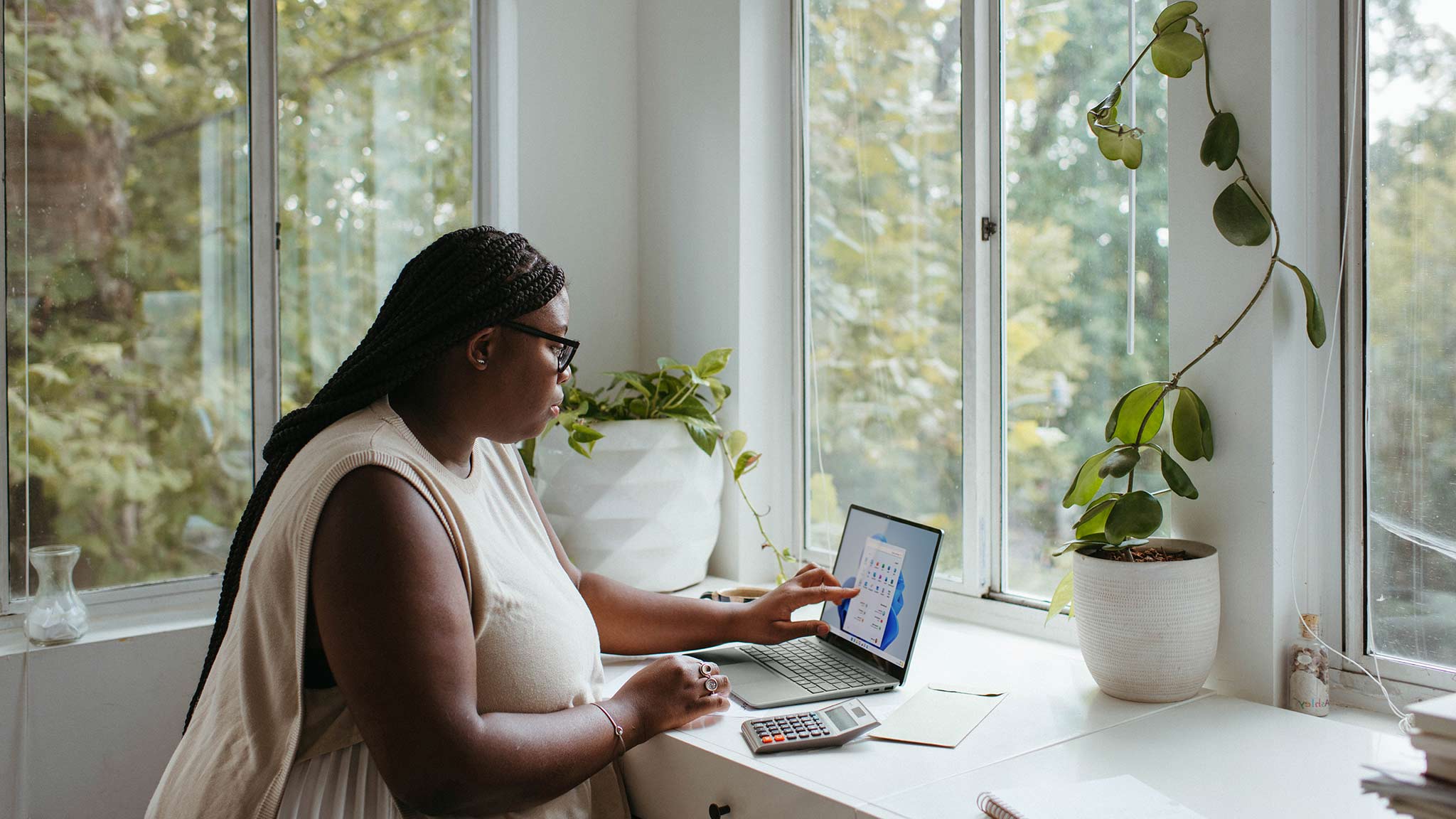Working From Home Can Be Lonely – But Doesn’t Have To Be

After you explore the joys of wearing comfortable clothes, not dealing with long commutes, and having no one micromanage your day, working from home can lose some of its luster.
- General loneliness tripled as a result of working from home during the COVID-19 pandemic with 58.1% citing it as a result of social distancing and shelter-in-place orders.
- 6 out of every 10 workers in the United States can perform their jobs from home and more workers are choosing to do so even after the COVID-19 pandemic shutdowns ended.
- It is possible for remote workers and freelancers to remain connected with the world and fight the loneliness that may arise due to their solitude.
Struggling with loneliness or having a mental health crisis?
- Suicide Prevention Lifeline: 1-800-273-TALK (8255); Deaf or hard of hearing dial 711 before the number or connect via online chat
When I first became a freelance writer in 2014 and began working from home for the first time, loneliness was the last thing on my mind.
My focus was on my newfound freedom and what I could do with it.
As exciting and wonderful as that was, it wasn’t long before I had to admit that working from home could be really lonely at times.
Don’t get me wrong — I still love being able to work from home and I wouldn’t trade it for the world.
But that doesn’t mean it’s always an easy road and working by yourself — from home — comes with its share of disadvantages, namely a lack of personal connection with others.
How To Ease Loneliness While Working From Home

Those who work from home aren’t doomed to feel lonely and isolated forever.
Whether you’re working remotely or you’re a freelancer like me, it’s possible to feel more connected and become more engaged with the world around you.
There are effective ways to deal with loneliness while working from home — or avoid it altogether:
- Return To The Office
- Use A Coworking Space
- Reach Out To Colleagues
- Join Local Groups
- Go Outside More Often
- Work Less, Play More
- Make Plans After Work
- Talk To A Professional
1) Return To The Office
Assuming it’s safe for you to do and an option that’s available through your employer, consider going back into the office.
Some companies are offering hybrid schedules so employees can work from home for part of the week while spending time in the office during the rest.
Even one or two days a week spent mingling with coworkers may reduce feelings of loneliness and isolation you’re experiencing.
For some people, the benefits associated with seeing other people and working side-by-side with coworkers may outweigh the perceived disadvantages of working in the office.
Yes, working in an office will mean a commute and yes, you (probably) will have to wear normal pants — not your favorite pair of pajama bottoms.
But spending a day or two each week in the presence of others can make the other days working from home much more bearable if you’re struggling with loneliness.
2) Use A Coworking Space
If, like me, you’re a freelancer or entrepreneur with no real office to “go back to,” consider using a coworking space, instead.
You may not have the familiarity of coworkers you know, but simply being around other people may help reduce your loneliness.
Having an “office” to physically travel to can also help you get into a routine of getting ready for the day and doing something different.
Answer truthfully — when working from home, how many days have you gone between showers or getting dressed in “normal” day clothing?
If a coworking space isn’t an option, coffee shops are a tried and true method for those who want to be where the people are while they work.
As long as they’ve got Wi-Fi and table space — and you’re not bothered by the background noise if they’re busy — your local coffee shop (even chains like Panera Bread or Starbucks) might be a perfect solution.
3) Reach Out To Colleagues
Got a work bestie you’re missing?
If you haven’t already, find private channels — outside of Slack, Microsoft Teams, and Zoom — to reach out.
Even if your message is just a bunch of emoji reactions to the most recent meeting, having someone to talk to about work can feel less isolating.
I did this even after I left my job.
My work bestie was my real-life BFF, and we often texted throughout the day.
I had to be sensitive to the fact that she was on the clock and didn’t have the same freedom to chat, but it still felt good to be connected.
4) Join Local Groups
If you’re a freelancer or entrepreneur working from home, you may want to consider professional groups like the Chamber of Commerce or a young professionals group.
But if you’re working remotely from home and just need a way to be around people, consider a meet-up based on a hobby or interest.
Take a cooking or art class.
Join a biking or hiking group.
Go where the people are doing what you love to do — or are just interested in learning more about the same things you are.
Meetup is a great resource to explore — allowing you to connect with others that share your interests or even your industry.
5) Go Outside More Often
This sounds like a no-brainer, but when you’re working from home it’s beyond easy to sit at your desk for 12 hours without blinking an eye (or in some cases, getting up to pee — which you should do, too).
Eat lunch at a local park.
Take a walk around your neighborhood — to walk your dog or by yourself.
Literally, go outside and touch the grass every so often. If it’s warm enough, stand in it barefoot and just enjoy the sensation.
It’s so easy to feel caged in and isolated when we see the same four walls while we work — and when we’re done with work for the day.
Getting outside can help reduce stress and at least allow you to breathe some fresh air once in a while.
Even better, you’ll probably see someone else and can give a quick wave or nod, which is a great reminder that other people do exist in the world.
6) Work Less, Play More
Working from home, whether for yourself or remotely, is supposed to provide more freedom.
So why do most of us simply work longer hours?
It’s often because we’re trying to prove to ourselves or our bosses that we’re “really working” and not slacking off.
But all that work contributes to feeling lonely and isolated, and it makes it hard to feel like you have time to reach out to others or do anything else aside from work-related tasks.
Create a (hard) boundary for yourself of what time you’ll stop working every day — or at least, most days.
This boundary will give you a clear separation from your work day once you’ve left your desk and provides room in your life to do other things.
7) Make Plans After Work
You’ve stopped working at a certain time, now go do something with that time — ideally with another person.
Plan a date night with your partner. Meet up for happy hour with coworkers.
Hell, go to Target or the grocery store and wander through the aisles if it makes you happy. Who doesn’t love a sale?
The point is to do something with your time that you want to do and that gets you around others.
If you can make those plans with people you know, even better.
You’ll be able to laugh, talk, gossip about work, or do whatever helps you connect with others.
8) Talk To A Professional
The reality is that you can follow “all” the self-help tips to feel less lonely and isolated while working from home and it may not help you in the end.
Maybe you can’t go out much due to your health and the ongoing pandemic.
Maybe your feelings of loneliness are part of depression, anxiety, and other mental health concerns.
Working with a mental health professional can make a big difference.
They can help you identify what you’re feeling and why — as well as solutions to help you navigate those feelings and work through them.
You’re not alone in needing professional support, and you’re not broken.
Most importantly, you’re worth the effort it requires to feel better.
Why Can Working From Home Be So Lonely?
Remote workers’ initial joy quickly turned to loneliness while working from home.
They learned this all a little too well at the height of the pandemic when working from home became the new norm.
The survey we conducted during the COVID-19 pandemic showed that general loneliness tripled as a result of the changes in our daily lives.
Although only 8.1% of respondents specifically cited working from home as one of the hardest parts of social distancing, 58.1% felt somewhat or much lonelier as a result of social distancing and shelter-in-place orders.
In my early freelance days, I was too busy decompressing from burnout, stress, and fatigue from my previous job to even think about whether I felt lonely or not.
Eventually, though, I realized there was no one to commiserate with when something ridiculous happened and I had no one but Google to turn to whenever I had questions.
At that point, work-from-home loneliness became all too real.
Loneliness while working from home can arise from:
- Being an entrepreneur or leader, if you are either
- Lack of social connection with coworkers
- Feeling isolated from others in your team or office when you work remotely
- Finding it hard to make friends or maintain relationships with former or current colleagues
- Feeling like others are more distant and standoffish, especially due to miscommunications that can occur as a result of technology (such as correspondence through “emotionless” email or text)
- Finding your at-home work space too quiet or boring
If any of this resonates with you personally, it’s not in your head.
Working from home is lonely (and for some, workplace loneliness is a thing too), even for introverts who crave silence — like me.
Studies back up our real-world experiences.
A 2021 UK survey of 2000 US and UK office workers found that many felt isolated from their co-workers.
During COVID-19, more people reported feeling lonely from 2020 to 2021, according to another UK study.
The beauty of working from home is that you can do it from anywhere — but that also means that the loneliness it creates is felt globally, too.
Decades ago, we never dreamed it would be possible to earn a living and support our families without even leaving the house but remote work is becoming more and more commonplace.
Pew found that about 6 out of every 10 workers in the United States can perform their jobs from home and 59% of them are doing so most — or all — of the time.
Although some of this shift was indeed shaped by the COVID-19 pandemic, more workers are continuing to work from home as a conscious choice — not because it is required of them.
As I mentioned earlier, there is a lot of freedom that comes with working from home and I still love being able to do so.
But although many of us communicate with others via email or text — often on a daily basis — human connection is sometimes lost in translation.
When we’re working with others in person, we see visual cues that relate to their response — like facial expressions or body language.
If someone looks at you in a shared office and says, “I need that on my desk by 3,” it’s very easy to discern their mood or intent, based entirely on their physical demeanor.
That same request — sent via email or text — lacks that (often) important element.
A simple text that reads, “I need that on my desk by 3,” could be construed in myriad ways that might range from a casual request, an urgent desire, or even an angry demand.
In this way, it’s very easy for miscommunications or misunderstandings to occur — which can exacerbate feelings of loneliness while working from home.
Finally, there is something to be said about the commiseration that’s enjoyed by coworkers who share an office space.
When work becomes stressful — or even if something amusing happens — casual conversations are part of the culture whenever you greet each other in the hallway, during lunch, or while grabbing a cup of coffee in the breakroom.
That just doesn’t happen at home.
Again, working from home can be wonderful — and it really is, for so many reasons — but it isn’t without its share of solitude.
Closing Thoughts
As someone who loves my work-from-home life, even I feel lonely from time to time.
You’re not doomed to feel alone and isolated forever.
You do have options for dealing with loneliness while working from home.
The most important thing to remember is that you’re not alone in this, either.
Chances are good that most of your coworkers who work from home may feel lonely, too.
Reach out where you can and get help when you need to.
Editor’s Note: This article is part of The Roots Of Loneliness Project, the first-of-its-kind resource that comprehensively explores the phenomenon of loneliness and over 100 types we might experience during our lives.
Find Help Now
If you’re struggling with loneliness while working from home, we’ve put together resources to meet you wherever you are — whether you want someone to talk to right now, or are looking for longer-term ways to help ease your loneliness.
- Suicide Prevention Lifeline: 1-800-273-TALK (8255); Deaf or hard of hearing dial 711 before the number or connect via online chat
- Resources & Emotional Support For Loneliness
- Volunteer & Pet Adoption Opportunities






